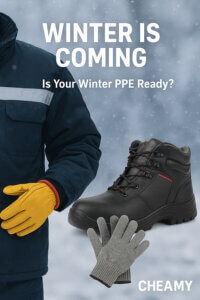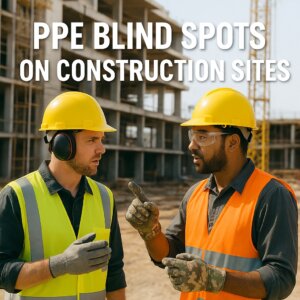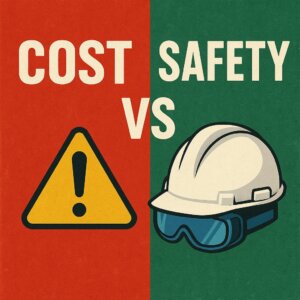In high-risk environments such as industrial settings, healthcare facilities, and laboratories, the eyes are among the most vulnerable organs. According to EU statistics, approximately 10%-20% of occupational eye injuries may result in permanent vision damage. To address this, the European Union established the EN 166 standard, which sets stringent technical requirements for personal eye protection equipment (PPE). This article delves into the details of this standard and provides a practical guide for selecting the right safety eyewear.
Part 1: EN 166—The “Gold Standard” for Eye Protection
1. Core Requirements EN 166 is the EU’s universal standard for all types of protective eyewear, including safety glasses, goggles, and face shields. It mandates rigorous testing to ensure effectiveness:
- Mechanical Strength: Impact resistance tests (e.g., steel ball collisions at 45–190 m/s, corresponding to protection levels F/B/A).
- Optical Performance: Light transmittance ≥74.4%, diopter deviation ≤0.06D to prevent visual distortion.
- Environmental Durability: Flame resistance (no ignition when exposed to a 650°C steel rod) and corrosion resistance (acid/alkali immersion tests).
2. Key Tests
- Impact Resistance: Three levels (S/F/B) simulate flying debris or high-speed particle impacts. For example, Level F requires lenses to withstand a 6mm steel ball at 45 m/s without shattering.
- Chemical Penetration Resistance: Goggles for labs must pass liquid splash tests to block corrosive substances.
- Additional Features: Anti-fog (N), scratch-resistant (K), and UV filtration (UV) require separate certifications.
3. CE Certification Process
- Testing Phase: EN 166 compliance tests (e.g., optical evaluation per EN 167, mechanical tests per EN 168) conducted by EU-accredited labs.
- Technical Review: Submission of design blueprints and production protocols to ensure consistency.
- Labeling: Certified products must display the CE mark, protection level (e.g., F/B/A), and functional symbols (e.g., K/N).

Part 2: How to Choose the Right Safety Eyewear? A 4-Step Guide
1. Assess Workplace Hazards
- Mechanical Risks (flying debris, metal chips): Select eyewear with impact resistance ≥ Level F (e.g., for workshops).
- Chemical Risks (acids, solvents): Opt for chemical-resistant frames (e.g., polycarbonate) with liquid-tight seals.
- Optical Radiation (welding arcs, UV): Pair with EN 169 (welding) or EN 170 (UV)-certified filters.
2. Match Protection Levels and Features
- Impact Ratings: Level F (45 m/s) for general workshops; Level B (120 m/s) for high-energy environments like metalworking.
- Additional Functions: Flame-retardant frames for high-heat settings (e.g., firefighting); anti-fog coatings (N) for humid conditions.
3. Prioritize Ergonomics
- Fit: Adjustable headbands (≥10mm width) and nose pads to prevent slippage or pressure points.
- Field of View: Unobstructed peripheral vision (≥100° horizontal as per EN 167).
- Compatibility: Choose over-glasses designs or prescription lenses for those needing vision correction.
4. Verify Certifications and Brands
- CE Mark: Ensure products include an EN 166 certification code (e.g., NB body number).
- Trusted Brands: Brands like uvex offer EN 172-certified anti-glare lenses, balancing protection and color accuracy.

Part 3: Future Trends—Smart and Multi-Functional Designs
Emerging innovations integrate sensors (e.g., real-time UV monitoring) and augmented reality (AR) displays while maintaining EN 166 compliance. For instance, some manufacturers now offer dual-certified lenses (anti-fog + blue-light filtering) for electronics manufacturing.
Conclusion The EN 166 standard is not just an EU market requirement—it’s a cornerstone of workplace safety. By systematically evaluating risks and selecting certified eyewear tailored to specific hazards, individuals and organizations can drastically reduce eye injury risks. When choosing PPE, prioritize compliance, comfort, and adaptability—after all, the best protection is both safe and imperceptible.








